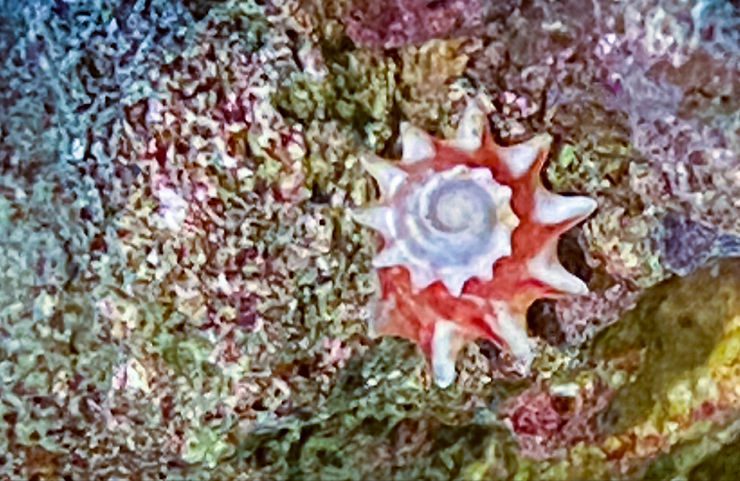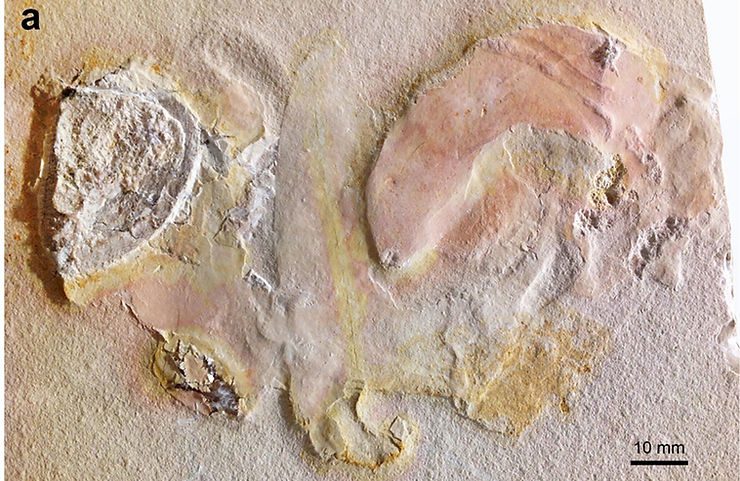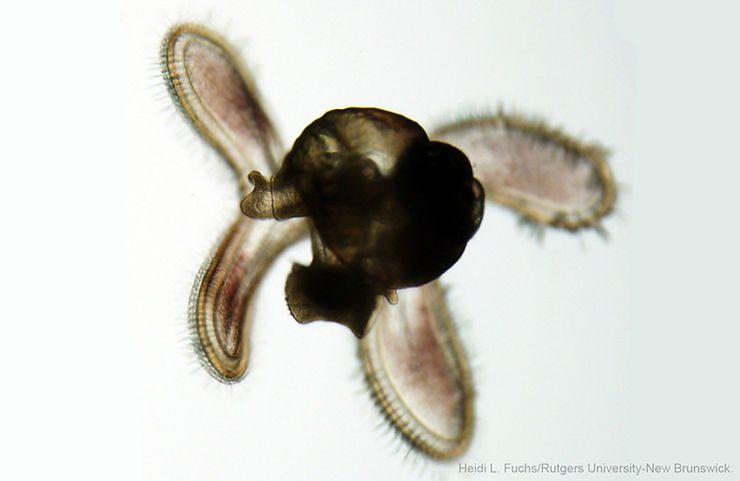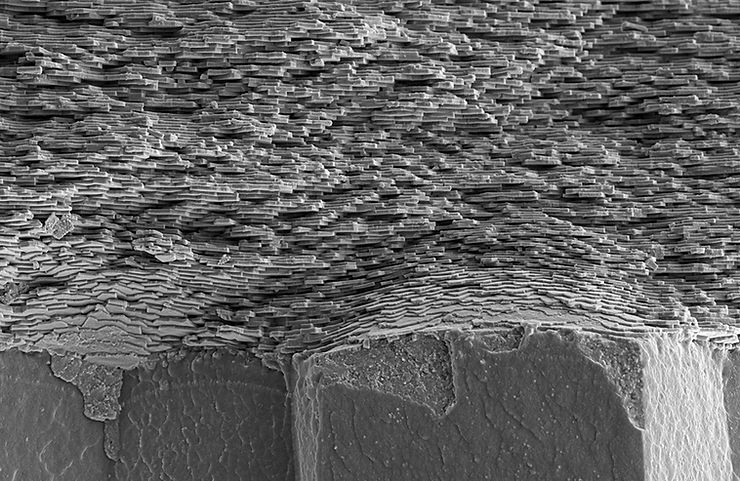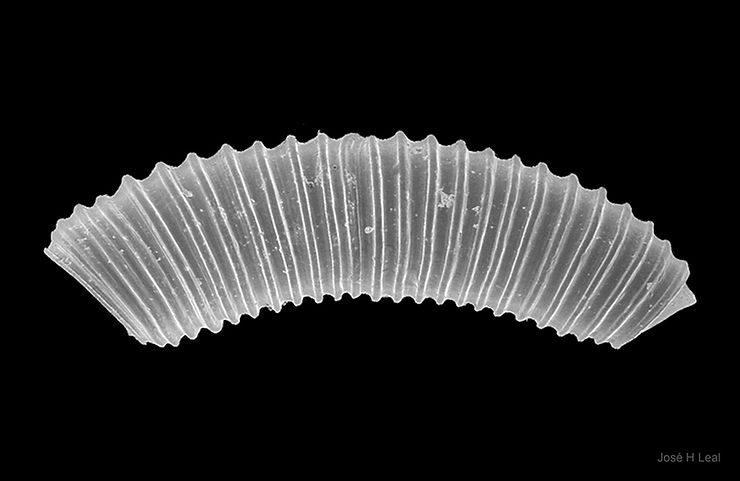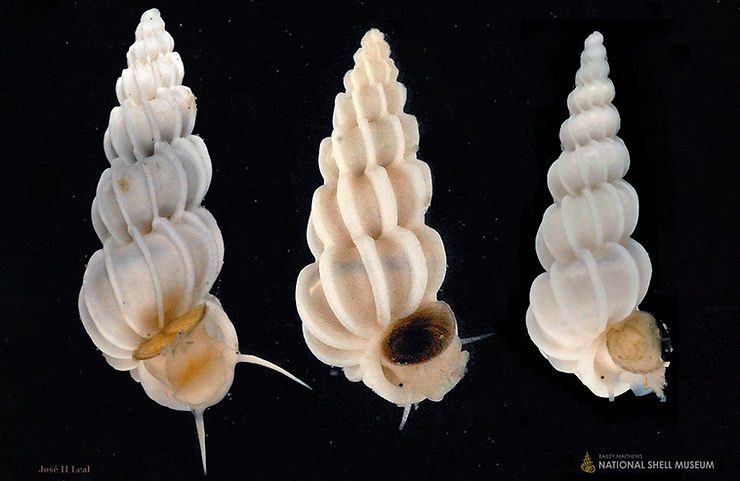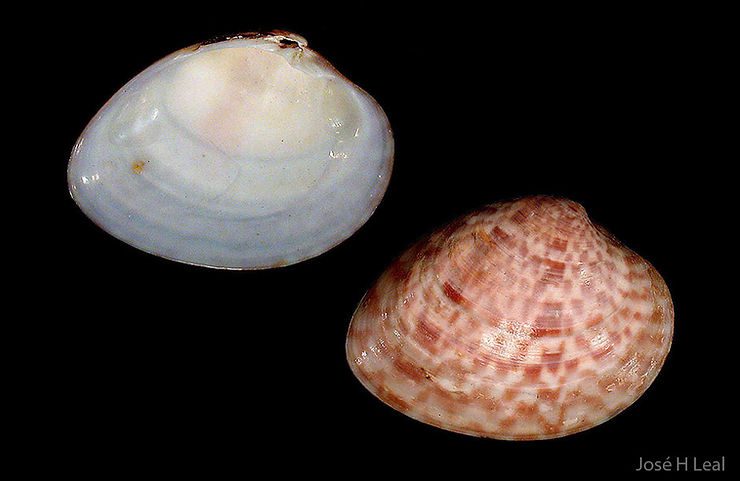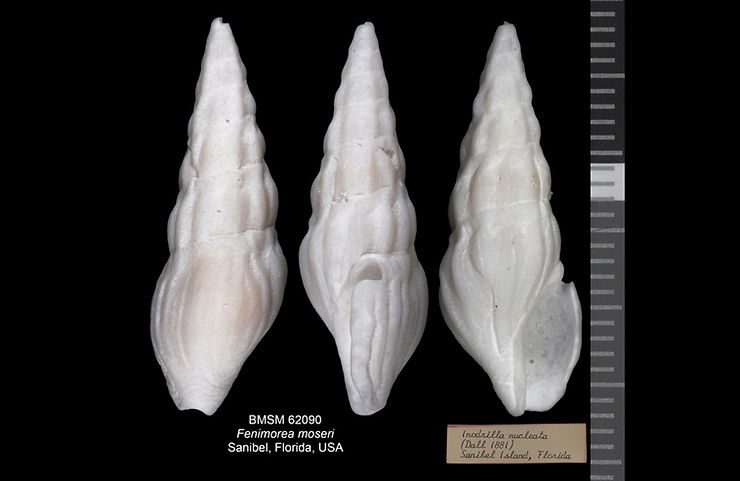
Shell of the Week: The Moser Drillia
Fenimorea moseri (Dall, 1889) is a local member of the family Drilliidae that may reach 30 mm (about 1.2 inches) in length. In larger shells, there are about ten whorls, and about 11 ribs per whorl. The interspaces between ribs are filled with a microsculpture of very narrow spiral lines. The posterior sinus, or “turrid notch”, is broad, curved. Color varies from a light pink to waxy-cream. #fenimoreamoseri #moserdrillia #drilliidae #sanibel
